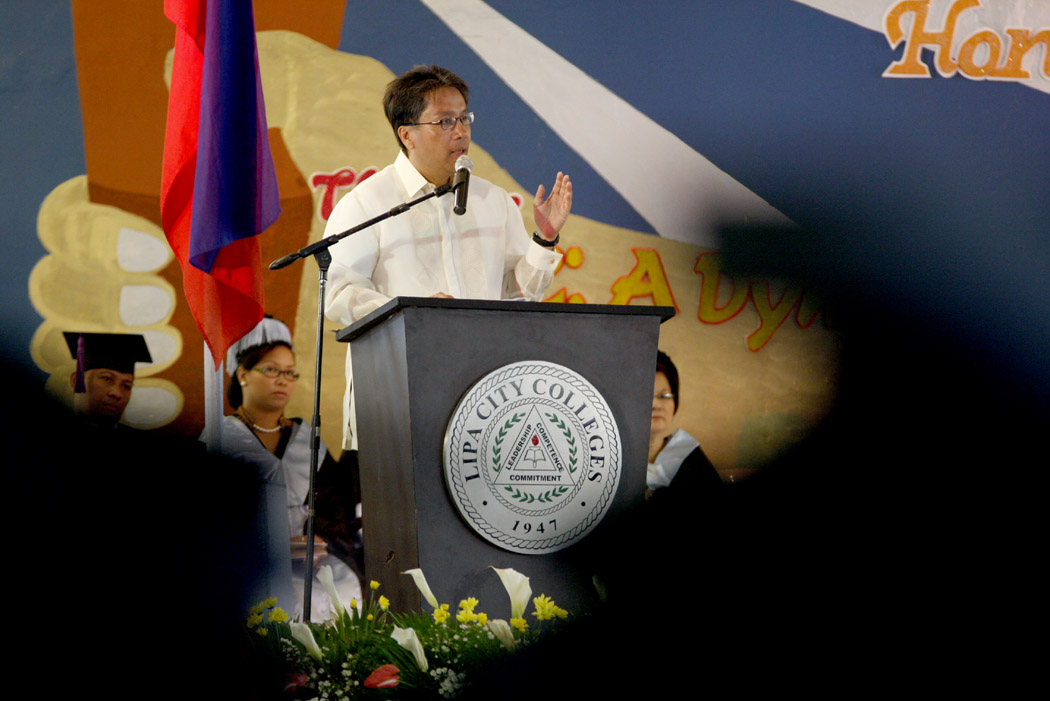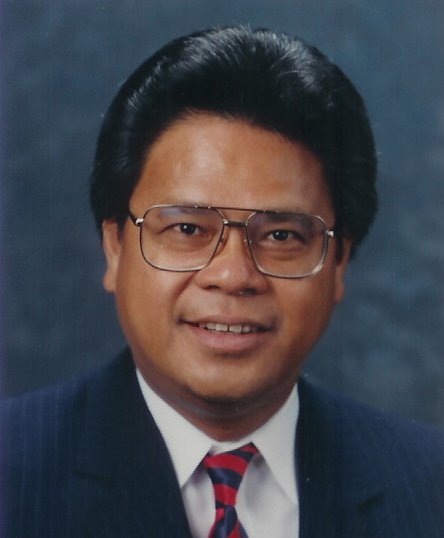by Rodel E. Rodis, April 14, 2008 Russ Sandlin, an American businessman in the Philippines, recently closed his call center in Manila because he said he could not find enough English proficient workers. “Not even 3 percent of the students who graduate college here are employable in call centers,” he complained.
Sandlin cited a Philippine Department of Education report disclosing that 80 percent of secondary school teachers in the Philippines failed an English proficiency test last year. “English is the only thing that can save the country,” he wrote, “and no one here cares or even understands that the Filipinos have a crisis.”
Sandlin’s discouraging comments came in the form of an an email blasting the Philippine Daily Inquirer for publishing the op-ed article of Ateneo English Prof. Isabel Pefianco Martin, president of the Linguistic Society of the Philippines, who criticized the “persistent efforts of lawmakers to institutionalize English as the sole language of learning in basic education.”
“Good luck to the Inquirer. It needs to reevaluate its writers,” Sandlin wrote, “unless it supports such a misguided set of ideas. God save the Philippines. I hate to see the country falling ever deeper into an English-deprived abyss.”
Prof. Martin’s op-ed piece, which was published on April 8, 2008 (“Myths about languages in the Philippines”), criticized the narrow thinking behind a bill in the Philippine Congress (House Bill 305) mandating the use of English as the medium of instruction in all academic subjects from Grade 3 onwards and encouraging the use of English as the medium of interaction outside the classrooms. It also proposes English as the language of assessment in all government examinations and entrance tests in all public schools and state universities and colleges.
The bill which was sponsored by Cebu Rep. Eduardo R. Gullas and co-sponsored by 207 other legislators (more than 2/3rds of the House membership) was approved on its third and final reading in the Lower House late last year. The Senate is slated to take up the bill in June.
If enacted into law, the bill will repeal a 33-year old policy of bilingual teaching in Philippine schools which encouraged the use of English and Pilipino (Tagalog) as mediums of instruction.
“Targeting the learning of two languages is too much for the Filipino learners, especially in the lower grades. And if the child happens to be a non-Tagalog speaker, this task actually means learning two foreign languages at the same time, an almost impossible task,” Gullas said.
Prof. Martin’s op-ed piece criticized the bill for its underlying premise that “if you don’t know English, you simply don’t know”. She explained that the link between intelligence and English language proficiency is very flimsy. “In this world, you will find intelligent people who cannot speak a word of English, as well as not-so-smart ones who are native speakers of the language,” she asserted.
Prof. Martin criticized the narrow goal of the bill which is “to produce English-proficient graduates for contact centers, hospitals and medical transcription offices, never mind if these graduates are unthinking products of the schools.”
“The ability to speak like an American will certainly not ensure excellent performance in the contact center jobs,” she wrote, if the students lack “the ability to manage culture-diverse environments,” she wrote.
Even if there was universal agreement that Filipinos should aspire to English proficiency, there is still the question of how best to reach that goal. According to Prof. Martin, “research studies prove that learning a language becomes more effective when emotional barriers are eliminated.” She cited Linguist Stephen Krashen who taught that the formula for success in learning a language is painfully simple: the lower the feelings of fear (low affective filter), the higher the chances of learning
California adopted a policy of bilingual education in public elementary schools to help non-English speaking students transition to regular classes that were taught in English. The Filipino Education Center (FEC) on Harrison Street in San Francisco, for example, was set up by the San Francisco Unified School District in 1976 to offer bi-lingual classes to newly-arrived Filipino immigrant students in aprogram where Tagalog-speaking teachers would teach the traditional elementary courses in both Tagalog and English so that the students would not fear English and not be traumatized by native American students ridiculing their accents.
My friend, Marivic Bamba, immigrated to the US with her family when she was 5 and couldn’t speak English. Her parents enrolled her in the FEC and she then transitioned into the regular school curriculum after three years of bilingual education. Marivic went on to graduate from college and obtain a master’s degree and be appointed by San Francisco Mayor Willie Brown to be a department head (Director of the SF Human Rights Commission).
Studies showed that immigrant students (Latinos, Chinese, etc.) who went through bi-lingual education learned English more effectively than students who were enrolled directly into regular American English-speaking classes without the benefit of a bi-lingual transition program.
Prof. Martin points out that most Filipinos speak at least three different languages and English might not even be one of them. “So when English is first introduced to them, it should be introduced slowly and gently, with much respect for their first languages,” she urged.
“Teaching and learning English in the Philippines may be a difficult task, but it need not be a frightening experience,” Prof. Martin wrote. “So much has already been spent on testing the proficiency of teachers and then training these teachers to become more proficient in the language. But simply focusing on testing and training, without recognizing the multilingual context of teaching and learning English in the Philippines, only reinforces fear of the language.”
English proficiency should not be viewed as the measure of a nation’s success. How can we explain the economic ascendancies of Japan, China, and Korea where English is hardly spoken? Those countries educated their populations in their native languages using their languages as tools of communication. English should be similarly seen as a tool of communication, not as the goal of education.
Contrary to Sandlin's impression, Prof. Martin was not opposed to the use of English as a medium of instruction in Philippine schools (she's an English professor at the Ateneo) but the reservations she expressed concerned the lack of thought given to how to best teach English to the population. The goal is the same (an educated English-speaking population), it is the path (bilingual or monolingual) to the goal that is in dispute.
Please send comments to Rodel50@aol.com or log on to rodel50.blogspot.com or write to Law Offices of Rodel Rodis at 2429 Ocean Avenue, San Francisco, CA 94127, or call (415) 334-7800.

 East West Players 42nd Anniversary celebrates the "Home" that many Asian Pacific Americans in the entertainment industry have found at East West Players. For 42 years, East West Players has been a place for the Asian Pacific American voice to thrive like awardee Carrie Ann Inaba, judge for 7 seasons now of 'Dancing With The Stars.'(Photo at left)
East West Players 42nd Anniversary celebrates the "Home" that many Asian Pacific Americans in the entertainment industry have found at East West Players. For 42 years, East West Players has been a place for the Asian Pacific American voice to thrive like awardee Carrie Ann Inaba, judge for 7 seasons now of 'Dancing With The Stars.'(Photo at left) Masters of Ceremonies will be the THREE FILIPINO TENORS namely Lito Villareal, Randy Guiaya and Antoine Diel . This year's honorees include celebrated playwright VELINA HASU HOUSTON and television personality CARRIE ANN INABA (ABC's Dancing with the Stars) and the hot new dance group JABBAWOCKEEZ (pictured at right).
Masters of Ceremonies will be the THREE FILIPINO TENORS namely Lito Villareal, Randy Guiaya and Antoine Diel . This year's honorees include celebrated playwright VELINA HASU HOUSTON and television personality CARRIE ANN INABA (ABC's Dancing with the Stars) and the hot new dance group JABBAWOCKEEZ (pictured at right).
















